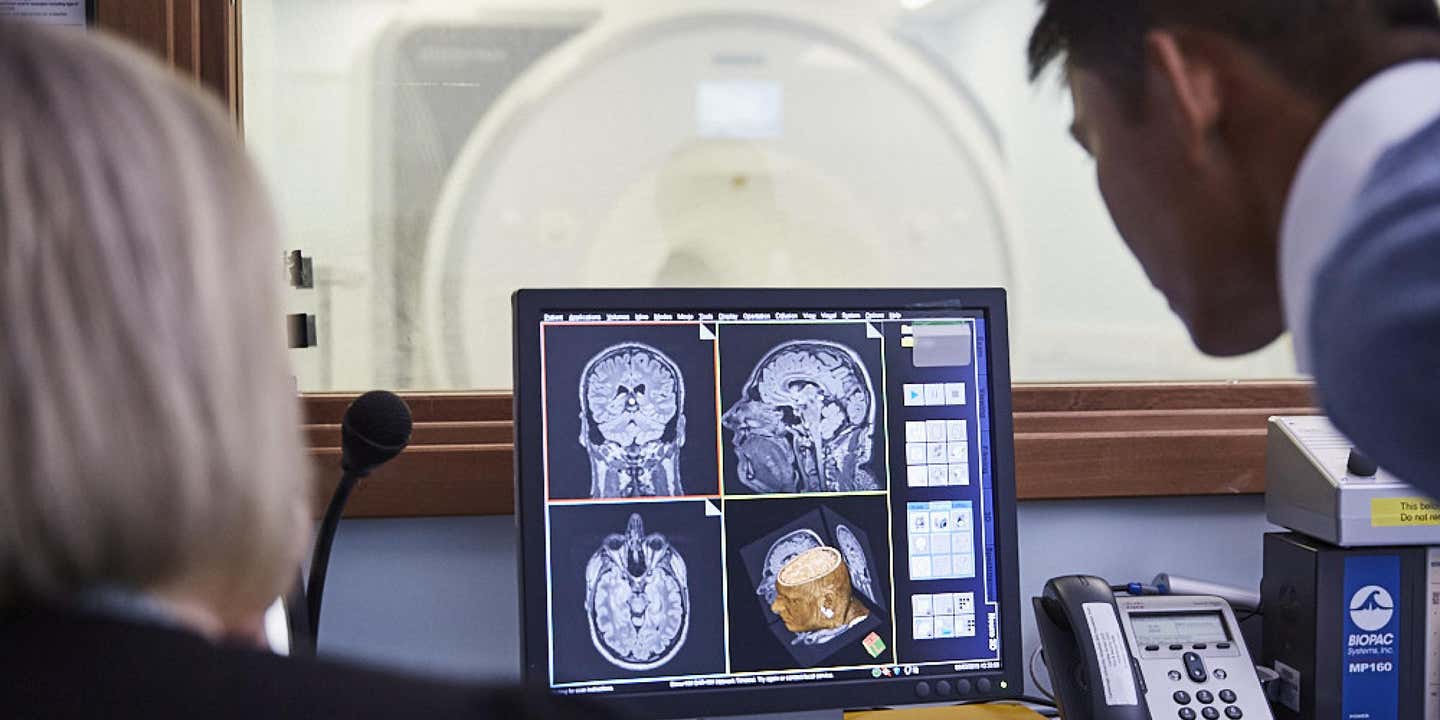Artificial intelligence innovation revolutionizes diagnosis and treatment of dementia
100,000 Danes over the age of 65, along with over 55 million people worldwide, live with dementia-related disorders such as Alzheimer’s

Around 100,000 Danes over the age of 65, along with over 55 million people worldwide, live with dementia-related disorders such as Alzheimer's and Parkinson's. These diseases occur when tiny building blocks in the body clump together, disrupting vital functions.
The reasons behind this and potential treatments remain largely unknown. Until now, studying this phenomenon has been difficult due to a lack of appropriate tools.
Researchers at the University of Copenhagen’s Department of Chemistry, led by the Hatzakis lab, have developed a machine learning algorithm that can track these clumps in real-time under a microscope.
This new algorithm can automatically map and monitor the clumped proteins responsible for Alzheimer's and other neurodegenerative disorders, a task that was previously impossible.
"In just minutes, our algorithm solves a challenge that would take researchers several weeks," says PhD Jacob Kæstel-Hansen, who co-led the research with Nikos Hatzakis. "This advancement in studying microscopic images of clumping proteins will hopefully contribute to our knowledge and, in the long term, lead to new therapies for neurodegenerative brain disorders."
The research findings have been published in the prestigious journal Nature Communications.
Microscopic Proteins Detected Instantly
Inside our cells, proteins and other molecules constantly interact, exchanging compounds and signals billions of times to keep our bodies functioning. However, when errors occur, proteins can clump together, impairing their intended functions and potentially leading to neurodegenerative disorders and cancer.
The new machine learning algorithm can identify protein clumps as small as a billionth of a meter in microscopy images.
Related Stories
Additionally, the algorithm can count and categorize these clumps by shape and size, tracking their development over time. The appearance of these clumps significantly influences their function and behavior in the body.
"When studying clumps through a microscope, you quickly notice that some are rounder, while others have filamentous structures," explains Steen Bender, the article’s first author. "Their exact shape can vary depending on the disorder they trigger. Manually counting them thousands of times is time-consuming and could be better spent on other research."
The Future of Protein Clump Research
The researchers believe their algorithm will make it easier to understand why protein clumps form, paving the way for new drugs and therapies to combat these disorders.
"The fundamental understanding of these clumps depends on our ability to see, track, and quantify them, describing how they change over time. No other methods currently do this automatically and effectively," says Bender.
The Department of Chemistry researchers are already using the tool to study insulin molecules. As insulin molecules clump, their ability to regulate blood sugar weakens.
"We observe undesirable clumping in insulin molecules as well," says Kæstel-Hansen. "Our new tool lets us see how these clumps are affected by different compounds we add. This way, the model can help us understand how to potentially stop or transform them into less dangerous or more stable clumps."
Open-Source Tool for Global Collaboration
The potential of this tool extends beyond the University of Copenhagen. The researchers hope that other scientists around the world will use the algorithm to build a comprehensive library of molecule and protein structures related to various disorders.
"As other researchers begin to use the tool, it will help create a large library of molecule and protein structures related to various disorders and biology in general. This will allow us to better understand diseases and try to stop them," concludes Nikos Hatzakis.
The algorithm is freely available online as open-source software, accessible to scientific researchers and anyone interested in understanding the clumping of proteins and other molecules.
This open access aims to accelerate the gathering of knowledge about the shapes and functions of proteins and molecules, ultimately advancing our understanding and treatment of diseases like Alzheimer's and Parkinson's.
For more science news stories check out our New Innovations section at The Brighter Side of News.
Note: Materials provided above by The Brighter Side of News. Content may be edited for style and length.
Like these kind of feel good stories? Get the Brighter Side of News' newsletter.
Joseph Shavit
Head Science News Writer | Communicating Innovation & Discovery
Based in Los Angeles, Joseph Shavit is an accomplished science journalist, head science news writer and co-founder at The Brighter Side of News, where he translates cutting-edge discoveries into compelling stories for a broad audience. With a strong background spanning science, business, product management, media leadership, and entrepreneurship, Joseph brings a unique perspective to science communication. His expertise allows him to uncover the intersection of technological advancements and market potential, shedding light on how groundbreaking research evolves into transformative products and industries.



